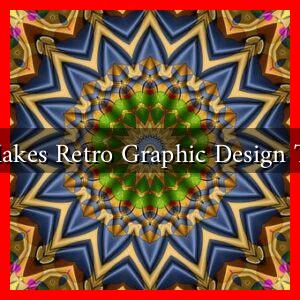-
Table of Contents
What Makes Retro Graphic Design Timeless
In an era dominated by sleek, minimalist aesthetics and digital innovation, retro graphic design continues to captivate audiences and inspire designers. The charm of retro design lies not only in its nostalgic appeal but also in its ability to convey messages effectively and evoke emotions. This article explores the elements that make retro graphic design timeless, examining its characteristics, cultural significance, and enduring popularity.
The Characteristics of Retro Graphic Design
Retro graphic design encompasses a variety of styles and techniques that hark back to earlier decades, particularly the 1950s through the 1980s. Here are some defining characteristics:
- Bold Colors: Retro designs often feature vibrant, saturated colors that evoke a sense of joy and nostalgia. Think of the bright oranges, greens, and yellows of the 70s.
- Unique Typography: Vintage fonts, such as script and serif styles, are commonly used to create a sense of authenticity and character.
- Geometric Shapes: Many retro designs incorporate geometric patterns and shapes, which add visual interest and structure.
- Illustrative Elements: Hand-drawn illustrations and playful graphics are prevalent, giving a personal touch to the design.
- Texture and Grain: Aged textures and grainy effects can evoke a sense of history and warmth, making designs feel more tactile.
Cultural Significance of Retro Design
Retro graphic design is deeply rooted in cultural movements and historical contexts. Each era has its own unique style that reflects the social, political, and technological changes of the time. For instance:
- 1950s: The post-war boom led to a focus on consumerism, with designs that celebrated modernity and optimism.
- 1960s: The counterculture movement influenced psychedelic designs, characterized by vibrant colors and abstract forms.
- 1970s: The rise of disco culture brought about bold typography and playful graphics, often seen in album covers and advertisements.
- 1980s: The advent of digital technology introduced new design possibilities, leading to the iconic pixel art and neon colors.
These cultural influences not only shaped the aesthetics of the time but also created a lasting legacy that continues to resonate with contemporary audiences. The revival of retro design in modern branding and advertising is a testament to its enduring appeal.
Case Studies: Successful Retro Design in Modern Branding
Many brands have successfully harnessed the power of retro graphic design to connect with consumers. Here are a few notable examples:
- Coca-Cola: The brand frequently revisits its vintage logo and packaging designs, evoking nostalgia while maintaining a modern edge.
- Levi’s: The iconic denim brand often incorporates retro elements in its advertising campaigns, celebrating its heritage and timeless style.
- Target: The retailer has embraced retro design in its product lines, appealing to consumers’ love for nostalgia while offering contemporary products.
These brands demonstrate that retro design can effectively bridge the gap between past and present, creating a sense of familiarity and trust among consumers.
The Psychological Appeal of Nostalgia
Nostalgia plays a significant role in the allure of retro graphic design. Research indicates that nostalgia can evoke positive emotions and foster a sense of belonging. According to a study published in the journal Emotion, nostalgic experiences can enhance mood and increase feelings of social connectedness. This emotional connection is a powerful tool for brands looking to engage consumers.
Conclusion: The Timelessness of Retro Graphic Design
Retro graphic design remains timeless due to its unique characteristics, cultural significance, and psychological appeal. By blending nostalgia with modern sensibilities, designers can create compelling visuals that resonate with audiences across generations. As we continue to navigate an ever-evolving design landscape, the enduring charm of retro design serves as a reminder of the power of creativity and the importance of connecting with our shared history.
In summary, the elements that make retro graphic design timeless include:
- Bold colors and unique typography
- Cultural significance tied to historical contexts
- Successful case studies in modern branding
- The psychological appeal of nostalgia
As we look to the future, it is clear that retro graphic design will continue to inspire and influence, proving that some styles never truly go out of fashion.

